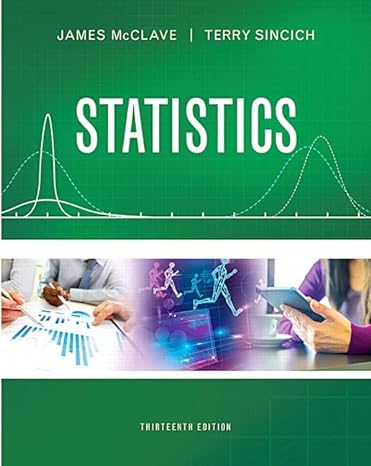Oven cooking study. A group of Harvard University School of Public Health researchers studied the impact of
Question:
Oven cooking study. A group of Harvard University School of Public Health researchers studied the impact of cooking on the size of indoor air particles (Environmental Science
& Technology, Sept. 1, 2000). The decay rate (measured in mm>hour) for fine particles produced from oven cooking or toasting was recorded on six randomly selected days.
The data is provided in the table.
a. Find and interpret a 95% confidence interval for the true average decay rate of fine particles produced from oven cooking or toasting.
b. Explain what the phrase “95% confident” implies in the interpretation of part a.
*c. Estimate the true standard deviation of decay rate with a 95% confidence interval. Interpret the result.
d. What must be true about the distribution of the population of decay rates for the inferences you made in parts a and c to be valid?
e. Suppose that we want to estimate the average decay rate of fine particles produced from oven cooking or toasting to within .04 with 95% confidence. How large a sample should be selected?
Step by Step Answer:

Statistics Plus New Mylab Statistics With Pearson Etext Access Card Package
ISBN: 978-0134090436
13th Edition
Authors: James Mcclave ,Terry Sincich





